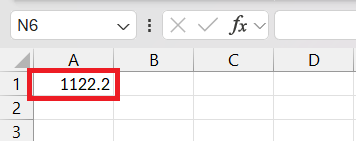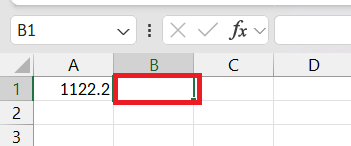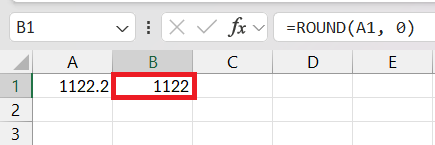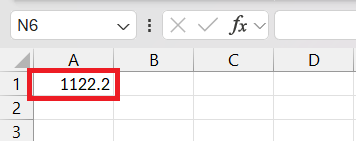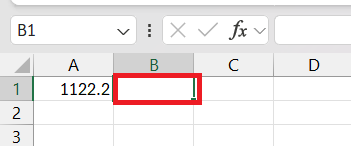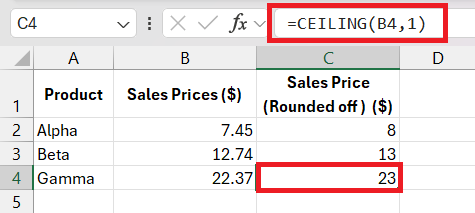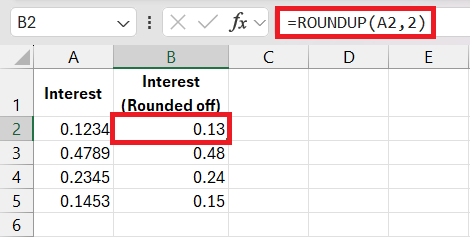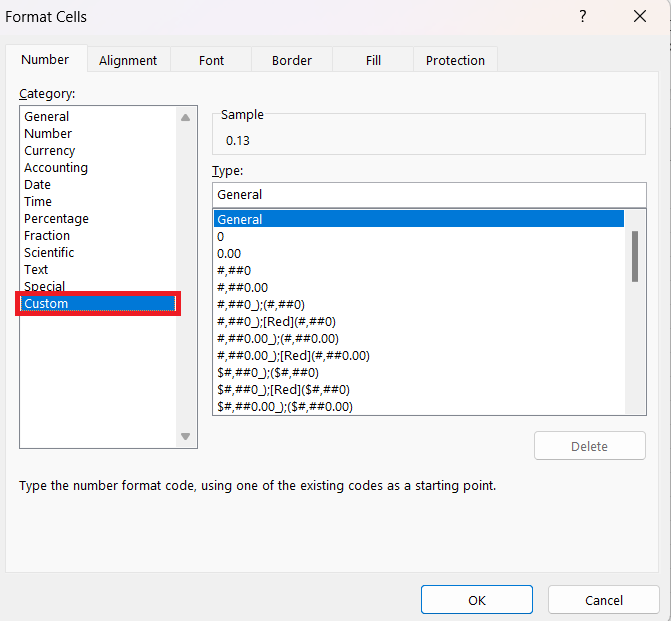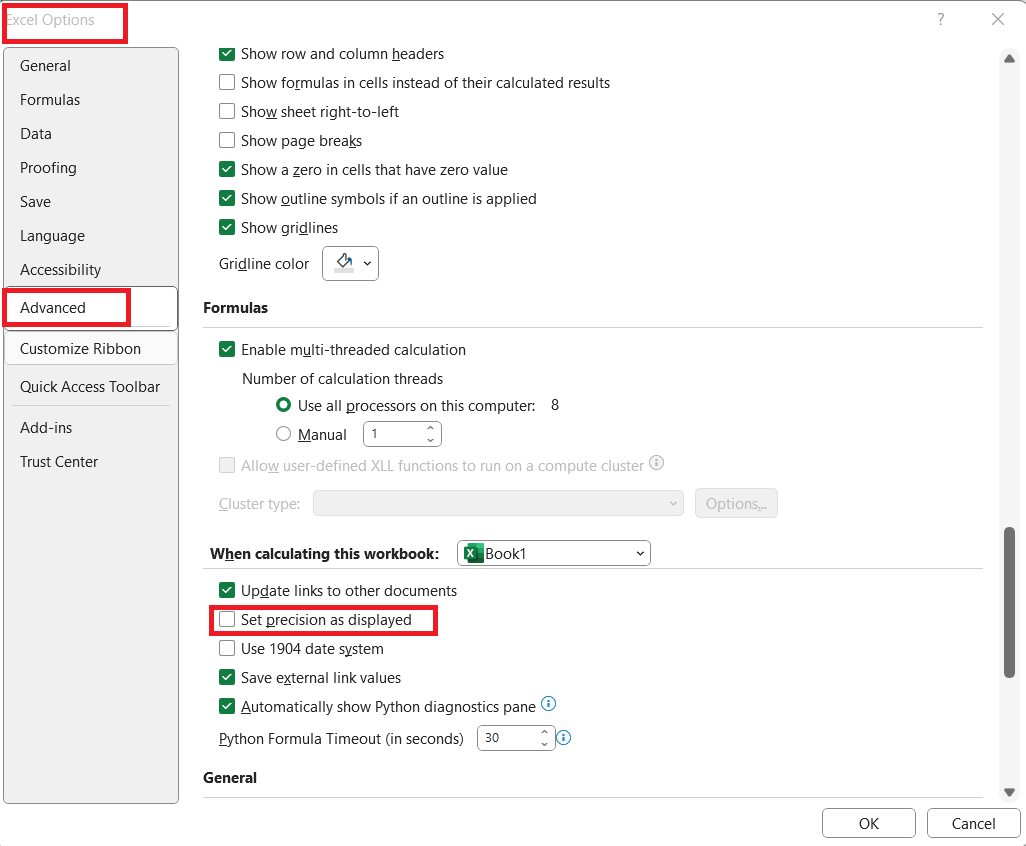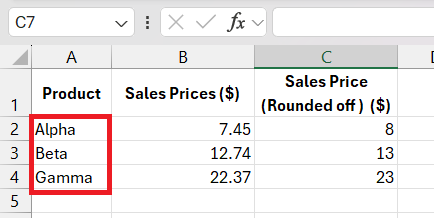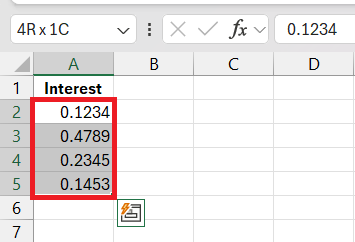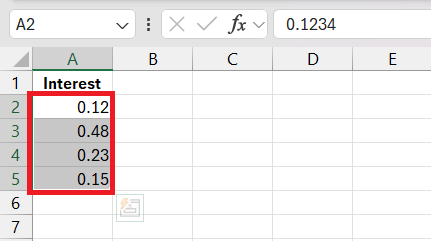Rounding numbers in Microsoft Excel is crucial for ensuring accuracy in financial reports and data analysis. This article discusses the significance of precise rounding, explores Excel’s various rounding functions, and offers step-by-step guidance on rounding to the nearest dollar using the ROUND, ROUNDUP, ROUNDDOWN, MROUND, FLOOR, and CEILING functions.
Key Takeaways:
- Accurate rounding is essential for presenting financial data clearly and adhering to accounting standards.
- Excel offers multiple rounding functions, each suited for different rounding needs and scenarios.
- The ROUND function is versatile, allowing for precise control over rounding up or down to a specified number of digits.
- The CEILING and MROUND functions offer specialized rounding options for pricing strategies and rounding to specific increments.
- Properly applied rounding techniques can streamline data analysis, improve readability, and minimize calculation errors.
Download the spreadsheet and follow along with the tutorial on How to round to the nearest dollar in Excel – Download excel workbookRound-to-the-Nearest-Dollar-Easily-and-Accurately.xlsx
Introduction to Rounding in Excel
The Importance of Accurate Rounding
Accurate rounding in Excel is vital for making sure that your calculations reflect real-world values. Overlooking this detail can lead to incorrect conclusions and poor decision-making. When dealing with financial figures, for instance, rounding enables you to present data in a format that’s both user-friendly and compliant with accounting standards. A number that’s been accurately rounded to the nearest dollar makes budgeting, forecasting, and analysis more straightforward and error-free.
Understanding Excel’s Rounding Capabilities
Excel’s rounding capabilities are versatile, providing you with several functions that can handle almost any rounding task you may come across. Understanding these capabilities allows for precision and control over your data. Excel doesn’t simply trim off excess digits; it uses specific rounding rules that you can customize according to your needs. By grasping how different rounding functions work, you can adapt your approach to various scenarios, whether you’re preparing financial statements, performing statistical analysis, or managing a complex dataset.
Table of Contents
Top Methods for Rounding to the Nearest Dollar in Excel
Utilizing the Classic ROUND Function
When it comes to rounding numbers in Excel, the classic ROUND function is the go-to tool. It’s straightforward and flexible, capable of rounding your numbers either up or down to a specific number of digits. Let’s say you need to present your financial data rounded to the nearest dollar. Here’s how to do it:
STEP 1: In cell A1 enter the number that is to be rounded off.
STEP 2: Select cell B1, where the rounded-off result will be displayed.
STEP 3: Enter the formula =ROUND(A1, 0). This tells Excel to take the value in your_cell ="A1" and round it to the nearest integer. By setting the number of digits (num_digits) to 0, you ensure that the result is a whole number—ideal for reporting dollars without cents in financial documents. Press enter to find the result.
Top 5 Features:
- Versatile rounding: up or down.
- Adjustable precision: specify any number of digits.
- Simple and easy to use.
- Compatible with formula chaining.
- Can handle large numbers and complex formulas.
Benefits:
- Provides accuracy in financial reporting.
- Streamlines data for better readability and interpretation.
- Enhances the data analysis process.
- Reduces errors in calculations.
- Saves time in manual rounding.
Cons:
- May inadvertently round significant figures.
- Can confuse if not applied consistently across datasets.
Best for:
- Analysts and professionals who work with financial data and require accurate, whole-number presentations.
Leveraging the ROUNDUP and ROUNDDOWN Functions
When more control over the direction of rounding is needed, the ROUNDUP and ROUNDDOWN functions come into play. ROUNDUP pushes the number away from zero — useful when conservatively estimating costs. Meanwhile, ROUNDDOWN pulls the number towards zero, providing a more optimistic forecast if you’re budgeting. Here’s how one might apply these functions:
For ROUNDUP:
STEP 1: In cell A1 enter the number that is to be rounded up
STEP 2: Select cell B1, where the rounded-up result will be displayed.
STEP 3: Enter =ROUNDUP(A1, 0) into the cell B1. Press Enter to round the value in cell A1 up to the nearest dollar.
For ROUNDDOWN:
STEP 1: Similarly to the steps used above, in cell B1 use =ROUNDDOWN(A1, 0) in the formula bar.
STEP 2: Hit Enter to round the value in cell A1 down to the nearest dollar.
Beyond Basic Rounding: Specialized Functions and Techniques
Applying the CEILING Function for Consistent Rounding Up
The CEILING function in Excel is a powerful tool for when you consistently want to round numbers up to a particular significance or multiple. This function is especially valuable in pricing strategies, where prices might need to be rounded up to the nearest dollar or to a significant value like $0.99 for psychological pricing.
To apply CEILING, you simply input =CEILING(number, significance):
numberis the value you wish to round.significanceis the multiple to which you want to round.
For example, if you’re rounding up to the nearest dollar, =CEILING(A1,1) would round up the value in cell A1 to the next whole dollar figure.
Ensuring Precision with the MROUND Function
The MROUND function is your precision artist in Excel; it smartly rounds a number to your desired multiple. So if you’re aiming to round to the nearest dollar, MROUND is your friend. It is particularly useful when you need your figures to be in specific increments—like rounding times to the nearest quarter-hour or adjusting measurements to the nearest half unit.
Here’s how to wield the MROUND function:
- Enter
=MROUND(value, multiple)wherevalueis the number you want to round. - And
multipleis the nearest increment to which you want to round the number. - Hit Enter, and Excel rounds your value to the nearest multiple you provided.
For example, if you’re rounding up to the nearest dollar, =MROUND(A1, 5) would round up the value in cell A1 to the next dollar.
Top 5 Features:
- Accounts for both upward and downward rounding.
- Customizable for any rounding increment.
- Handles both positive and negative values.
- Ideal for inventory and unit-based measurements.
- Precise adjustments for financial modeling and time sheets.
Benefits:
- Delivers exact rounding for tailored needs.
- Enhances the consistency of unit allocations.
- Aligns with specific industry standards.
- Minimizes waste when dealing with physical inventory.
- Provides a clear basis for invoicing and billing.
Cons:
- Complexities may arise if not used with proper understanding.
- Incorrect increments can lead to significant rounding errors.
Best for:
- Supply chain managers, accountants, and project planners who work with quantities and require them to match specific multiples for efficiency and standardization.
Rounding in Practice: Real-World Examples
Case Study: Round Price to Nearest Dollar for Retail Inventory
In retail, pricing strategy is crucial, and rounding can play a significant role. Consider a retailer who needs to update their inventory prices to end in .99 for psychological pricing—or perhaps a dollar for simplicity. Using Excel to round prices can save hours of manual work and reduce errors.
In our case study, a local boutique adjusted their pricing model by rounding up their merchandise costs to the nearest dollar using the CEILING function. They set the significance to 1, which adjusted all prices up, making it easier for customers to estimate total costs and for the cashier to manage transactions.
- Before CEILING: Prices were uneven, ranging from $7.45 to $22.37.
- After CEILING: Prices became $8.00, $23.00, resulting in a streamlined, attractive pricing structure.
The outcome was a noticeable lift in sales, attributed to the ease of transaction for customers and a price point that subtly nudged higher sales volumes.
Example: Managing Financial Reports by Rounding Interest Payments
Rounding is also a key player in managing financial reports, particularly for interest payments. When interest payments are small, they can carry over several decimal places, but it’s standard practice to round these to two places for reporting purposes.
Let’s consider a bank that manages customer savings accounts where interest is calculated daily. When it’s time to credit accounts, they need to round the interest payment to the nearest cent before applying it. They use the ROUNDUP function, ensuring that customers always receive a slightly generous interest amount.
The formula they apply is =ROUNDUP([Interest Payment Amount],2), which rounds up the interest payments to the next highest penny. This establishes trust and goodwill, as customers perceive the bank as fair and possibly more generous.
- Before rounding: Interest payments could be $0.1234.
- After rounding: Payments are cleanly adjusted to $0.13.
This approach not only streamlines the account statements for customers but also ensures accuracy and compliance with regulatory standards.
Additional Rounding Insights for Excel Users
Dealing with Decimals: Tips and Tricks
Dealing with decimals in Excel doesn’t have to be confusing. Embracing a few tips and tricks can help you manage decimals effectively:
Use the Increase/Decrease Decimal Buttons: Quickly adjust the number of decimal places displayed without affecting the cell’s actual value. Perfect for quick formatting.
Apply a Custom Format: Tailor how Excel displays numbers by customizing the number format. This way, cells can show rounded numbers while retaining their original decimal values for calculations.
Set Precision as Displayed: In the Excel options, there’s a setting to “Set precision as displayed,” which will round stored values to the displayed format. Use this with caution as it changes the actual data.
Consider Using Helpers Columns: If you need to maintain the original values and the rounded ones, helper columns can keep your workbook organized and your calculations accurate.
Remember, while displaying fewer decimals can make data easier to read, always ensure that your underlying calculations maintain enough precision to be accurate and reliable.
Avoiding Common Mistakes in Rounding Numbers
When rounding numbers in Excel, sidestepping common pitfalls can save you from miscalculation headaches. Here are some concise pointers to keep you on the right track:
- Specify the correct number of decimal places. When using ROUND or related functions, forgetting to set the digit count can yield unwanted results.
- Use
ROUNDDOWN, notROUND, if you strictly need to reduce the number.ROUNDmay go up or down, depending on the trailing digits. - Avoid rounding to the nearest even or odd number unless your specific scenario calls for it (using
EVENorODDfunctions). - Always double-check your use of
CEILINGandFLOOR. Remember thatCEILINGrounds up, andFLOORrounds down to the nearest specified multiple. - Remember that Custom Number Formats round numbers for display only, not the underlying data, which could cause discrepancies in calculations.
By addressing these common errors proactively, you can ensure your Excel rounding results are always spot-on.
Making the Most of Excel’s Formatting Options
Quick Adjustments with the Decrease Decimal Button
For those times when you’re making a presentation or preparing a report and require numbers rounded only for visual clarity, Excel’s Decrease Decimal button offers a one-click solution. Here’s how to leverage this feature:
STEP 1: Select the cells with the numbers you want to format.
STEP 2: Round to the Nearest Dollar Easily and Accurately – 1Click the Decrease Decimal button (with the zero and arrow pointing left) in the toolbar.
STEP 3: With each click, Excel decreases the number of decimal places by one.
The beauty of the Decrease Decimal button lies in its simplicity; it changes the display value without altering the cell’s actual numerical value. This means your precise data remains intact for any calculations, while your presentation stays sleek and understandable.
FAQ: Mastering Excel Rounding to the Nearest Dollar
What is the difference between the ROUND and MROUND functions?
The ROUND function in Excel rounds a number to a specified number of decimal places, either up or down. It’s often used to limit the number of decimal points for easier readability and calculation. The MROUND function, on the other hand, rounds a number to the nearest specified multiple. It’s particularly useful when you need to round a number to an increment that is not a power of 10. Both are essential for precise control over how numbers are rounded in your worksheets.
ROUND is typically for general rounding, while MROUND is for specific interval rounding.
Can I round to the nearest dollar while keeping cents visible?
Yes, you can round to the nearest dollar while keeping cents visible using custom formatting in Excel. Set the cell format to show two decimal places, which keeps the appearance of cents, but use a rounding function, like ROUND or MROUND, to ensure the underlying value is rounded to the nearest dollar. This way, your data retains its original precision while the displayed value shows the rounded figure.
Apply rounding for calculations, but retain cent details for display.
How do I round numbers to the nearest dollar in Excel?
To round numbers to the nearest dollar in Excel, you can use the ROUND function. Simply input =ROUND(A1, 0) in a cell, where A1 is the cell containing the number you want to round. This function will round the value in A1 to the nearest whole number, effectively giving you the nearest dollar amount.
Use ROUND with 0 decimal places for nearest dollar rounding.
How do you round to the nearest $5 in Excel?
To round to the nearest $5 in Excel, use the MROUND function by writing =MROUND(A1, 5) where A1 is the number you want to round. This will round the number in A1 to the nearest multiple of 5 dollars, equipping you with a figure suitable for pricing, budgeting, or cost estimates with base-5 increments.
MROUND tackles custom increment rounding efficiently.
How to use the round function in excel?
Using the ROUND function in Excel is straightforward. Enter =ROUND(number, num_digits) into a cell, replacing number with the value you want to round and num_digits with the number of decimal places you need. For instance, =ROUND(10.456, 2) would round the value to 10.46. The function rounds the value to the specified precision, which can be both to the right or left of the decimal point.
Use ROUND to tailor precision in your numerical data.
John Michaloudis is a former accountant and finance analyst at General Electric, a Microsoft MVP since 2020, an Amazon #1 bestselling author of 4 Microsoft Excel books and teacher of Microsoft Excel & Office over at his flagship MyExcelOnline Academy Online Course.

